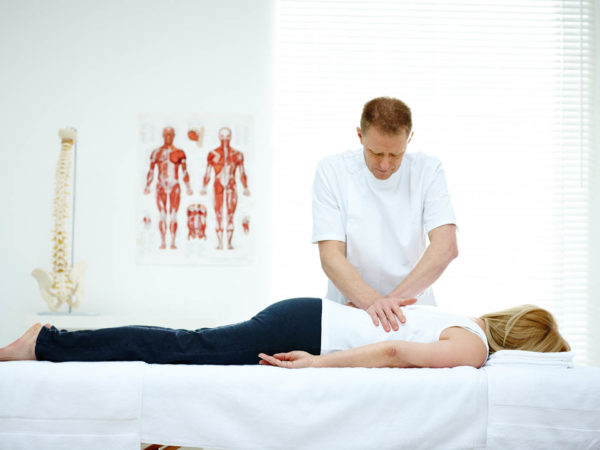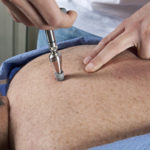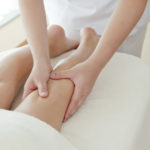Trager Work, Trager Approach

What is Trager Approach?
Trager Approach, also known as Trager Work and psychophysical integration therapy, was developed by Milton Trager, M.D. Over his lifetime beginning as a young man, Dr. Trager developed the system as a way to treat his own chronic back pain, which was the result of a congenital spinal deformity. He became fascinated by how the body coordinated its patterns of movement in response to chronic pain or injury.
Trager Approach is based on the premise that discomfort, pain and reduced function are physical symptoms of accumulated tension that result from accidents, weak posture, fear, emotional blockages and daily stress. It focuses on reducing these unnatural patterns of movement and eliminating neuromuscular tension by using gentle, rhythmic rocking motions. These rhythmic movements can create a state of deep relaxation, which therapists say can allow the body and mind to achieve a state of balance and integration.
What conditions is Trager Approach used for?
Trager Approach is effective for back and neck pain as well as other joint irritation and soft tissue discomfort. It can be a useful adjunct in improving athletic performance, flexibility, or problems with balance. It has also been successfully used to facilitate rehabilitation from physical injuries and neurological events like a stroke. Tension headaches, stress-related disorders, and other emotional imbalances can be relieved by the Trager Approach as well. Overall it is best used for postural problems, mobility issues and pain relief.
What should one expect on a visit to a practitioner of Trager Approach?
A typical session lasts from 60 to 90 minutes. There are two phases to Trager Approach: the first is known as “tablework.” A client usually begins the session lying on a padded massage table in loose-fitting clothing. A practitioner will work to achieve a state known as “hook-up” – a deep state of relaxation and connection between practitioner and client. This is done using gentle rocking and lengthening movements of the client’s body to invoke a state of increased relaxation and flexibility. As these rhythmic motions progress, it is thought that deeper states of relaxation can facilitate the release of unhealthy patterns of tension between mind and body at an unconscious level. By teaching the mind to unlearn these patterns of “blockage,” the body can also release chronic states of tension and become more flexible with less pain.
The second phase is a self-care set of exercises called “Mentastics” (coined from mental gymnastics). The client is taught certain movements to perform at home to prolong the positive effects of the session. This helps the patient to again experience the “hook-up” state achieved during table work.
Are there any side effects or conditions where Trager Approach should be avoided?
Trager Approach appears to be very safe. There are no documented side effects or adverse events from using this form of therapy. Typically, a client should physically be able to lie on a table for the duration of treatment. Recent surgery, blood clots, debilitating pain, severe respiratory difficulties and cardiovascular problems may pose a challenge for Trager Approach. A physician should evaluate and clear a patient for Trager Approach before the therapy is undertaken.
Is there a governing body that oversees or credentials practitioners in Trager Approach?
Trager International oversees the education and certification of Trager Approach providers. There are three levels of training for core elements of Trager Approach (136 hours), and a Mentastics training course (24 hours). There is anatomy and physiology training as well as fieldwork, where the practitioner must complete and document at least 90 sessions of Trager Approach, and receive at least 30 sessions. In total, training to be a Certified Trager Practitioner takes a minimum of 409 hours. Practitioners maintain their certified status through ongoing continuing education coursework.
How does one get in touch with a practitioner of Trager Approach?
The website for the United States Trager Association is www.tragerus.org. It has a detailed practitioner list for the U.S.as well as international practitioners. You can also contact Trager International at 216-896-9383. Their website is www.trager.com.
Are there other alternative therapies that might work well in conjunction with Trager Approach?
Because Trager Approach is effective in treating musculoskeletal diseases, dealing with injuries and improving athletic performance, various movement therapies like yoga, tai chi or qi gong can be helpful additions. Other methods like the Alexander Technique and Feldenkrais have a similar focus. Acupuncture, manipulation and massage can all facilitate healing from chronic pain.
How does Dr. Weil feel about Trager Approach?
Dr. Trager’s original work was with polio and post-polio patients. He also treated individuals with muscular dystrophy, Parkinson’s disease, multiple sclerosis, strokes and even psychiatric disorders. Knowing that Trager Approach was first used in this patient population, Dr. Weil recommends it as a tool for rehabilitation, especially after sports injuries or neurological events. He has also seen it work for people with back and leg problems such as sciatica as well as for people with breathing issues like asthma and emphysema.









